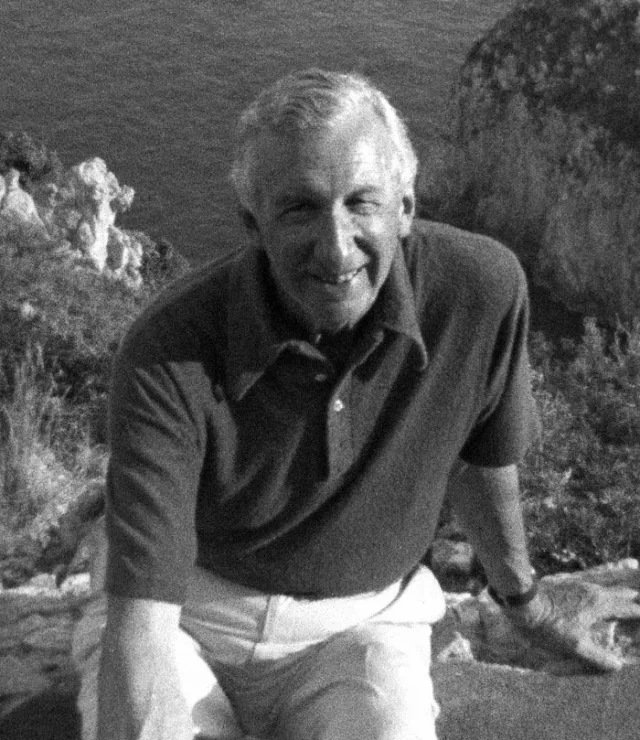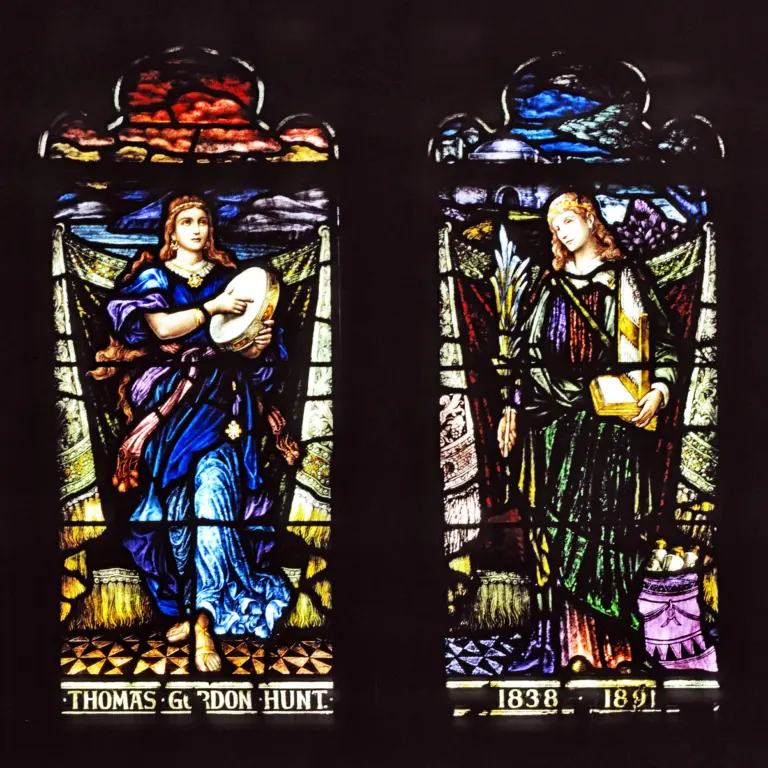Oral History Project 1974-2025 Growing Up a Writer in Greenwich – Francis Steegmuller

By Mary A. Jacobson
What are the childhood influences from where one can trace a life’s passion? In the case of Francis Steegmuller, acclaimed recipient of many literary honors, his formative years in the Greenwich schools can be credited for igniting his literary gifts.
Francis Steegmuller, born in 1906, was interviewed in 1977 by Oral History Project volunteer Catharine McNamara at his home in New York City. As he recalled his years growing up in Greenwich, he remembered with nostalgia simple pastimes like sledding down Sound View Drive, “blueberrying” and “blackberrying” in the woods across from his house, and ice skating at Ten Acres (where Greenwich High School (GHS) is now located).
There were also long summer days at Little Captain’s Island beach “the only public bathing beach in Greenwich at that time.” Tod’s Point was then “completely private. Nobody dreamed of going to Tod’s Point to swim.” Bird watching was also a pleasing pastime. “My parents gave me some binoculars, and I used to spend a lot of time watching the birds. I always walked through the woods on my way to Havemeyer School.” Later, they lived in a home on the corner of Stanwich Road where “we kept chickens and pigs. It was really like a miniature farm.” His dad commuted to work in New York City each day “but at home he’d be a farmer in a modest way.”
Steegmuller described himself as a quiet, bookish fellow whose family was well-established in Greenwich. His mother had lived in Greenwich since her childhood. “She knew all the people who had the stores on Greenwich Avenue and people who had the houses around.” Her stepmother, Sarah Held, and her sister, Minnie Held, “ran a hotel called the Held House (later known as Held Cottage). It was down on Indian Harbor.” His grandfather, an immigrant from Ireland, became Judge of Probate in Greenwich. Their family claimed four generations of lawyers in town. Steegmuller’s father hoped his son would become a certified public accountant “despite my bad marks in mathematics, which were really my only bad marks. He thought for a long time that it was too bad that I didn’t go into public accounting. It would have been a disaster, I assure you.”
Instead, Steegmuller credited two GHS teachers, in particular, as having had impressionable and long-lasting effects on his future endeavors. One was Catharine Woods “the teacher I knew best. I knew her from the time I was a freshman in high school (1918) until she died (1976).” As Steegmuller describes her, “She was an excellent teacher. We always enjoyed her class… She liked people who had a talent for writing, who loved words, who loved to read and to show that they could write. There was a magazine in school called The Green Witch. Those of us who wrote for that, she always encouraged them.” (Catherine Woods has also been credited by Truman Capote as recognizing and encouraging his writing talents while a student at GHS in the years 1939-1942.)
While a student at Columbia University, Steegmuller wrote his first book, O Rare Ben Jonson, published by Alfred Knopf in 1927, under the pseudonym Byron Steel, “a rather romantic name which seems silly to me now.” At the time Steegmuller also considered changing his name to a simpler one like Stuart or Fitzgerald. He gingerly approached his father about it who responded, “Do it if you want to. It’s a clumsy name. I’ve always had trouble with it, and I understand.” Because his dad was so understanding, “I knew I wanted to keep his name. So, I never did change it.” In recognition of the publication of his first book, “Catherine Woods invited me out for tea in New York. She took me to the Plaza Hotel for tea. I was young and, of course, thrilled…We remained friends from then on always.”
A second teacher whom Steegmuller cited as influencing his writing was “a very good French teacher, Mademoiselle Hooker… I found that I took quite easily to the study of French.” Upon graduation from GHS, he was awarded “a medal to the person who had the highest marks in French” by the Alliance Francaise in Greenwich. According to Steegmuller, “Both teachers had a considerable influence. . . It was only later, when I became interested in a particular French subject, Flaubert and his novel Madame Bovary, that I combined the two interests, the writing and the French.”
A further fascination with French was engendered by a travel book series his parents had given him entitled Stoddard’s Lectures. “In those days, of course, there wasn’t nearly as much travel, and he opened up fairylands to some of these people who were stay-at-homes… I was so fascinated by two volumes, one on Paris and one on France, that they were almost falling to pieces as a result of my childhood reading.” In addition, Steegmuller recalled one winter when, at the age of four, he and his family lived in Montreal. He conjectured, “So it was a combination of something innate or acquired at a very early age . . . combined with the good teaching I had from Mademoiselle Hooker, that gave me a basis in French, and so that later somehow I began to write about French things.”
In his literary career, at the time of his OHP interview in 1976, Steegmuller had written twenty books, several on the subject of Gustave Flaubert, including a translation of his letters, and was a recipient of the National Book Award. In conclusion, Steegmuller observed, “I had excellent teachers. I don’t think anyone could have had better teachers anywhere.”
The interview “School Days Remembered” may be read in its entirety or checked out at the main library. It is also available for purchase by contacting the OHP office. The OHP is sponsored by the Friends of Greenwich Library. Visit the website at glohistory.org. Our narrator’s recollections are personal and have not been subjected to factual scrutiny. Mary Jacobson serves as blog editor.




